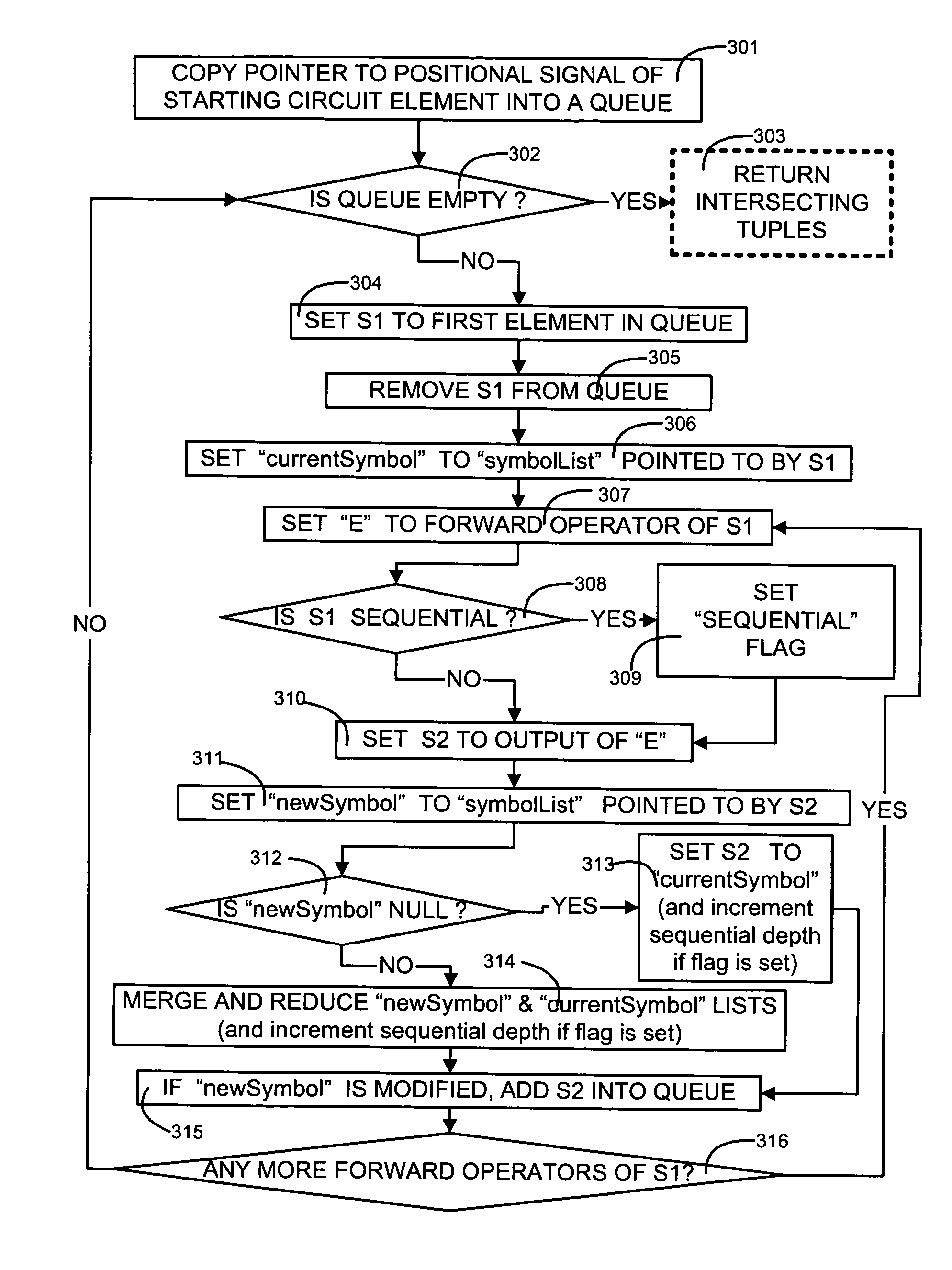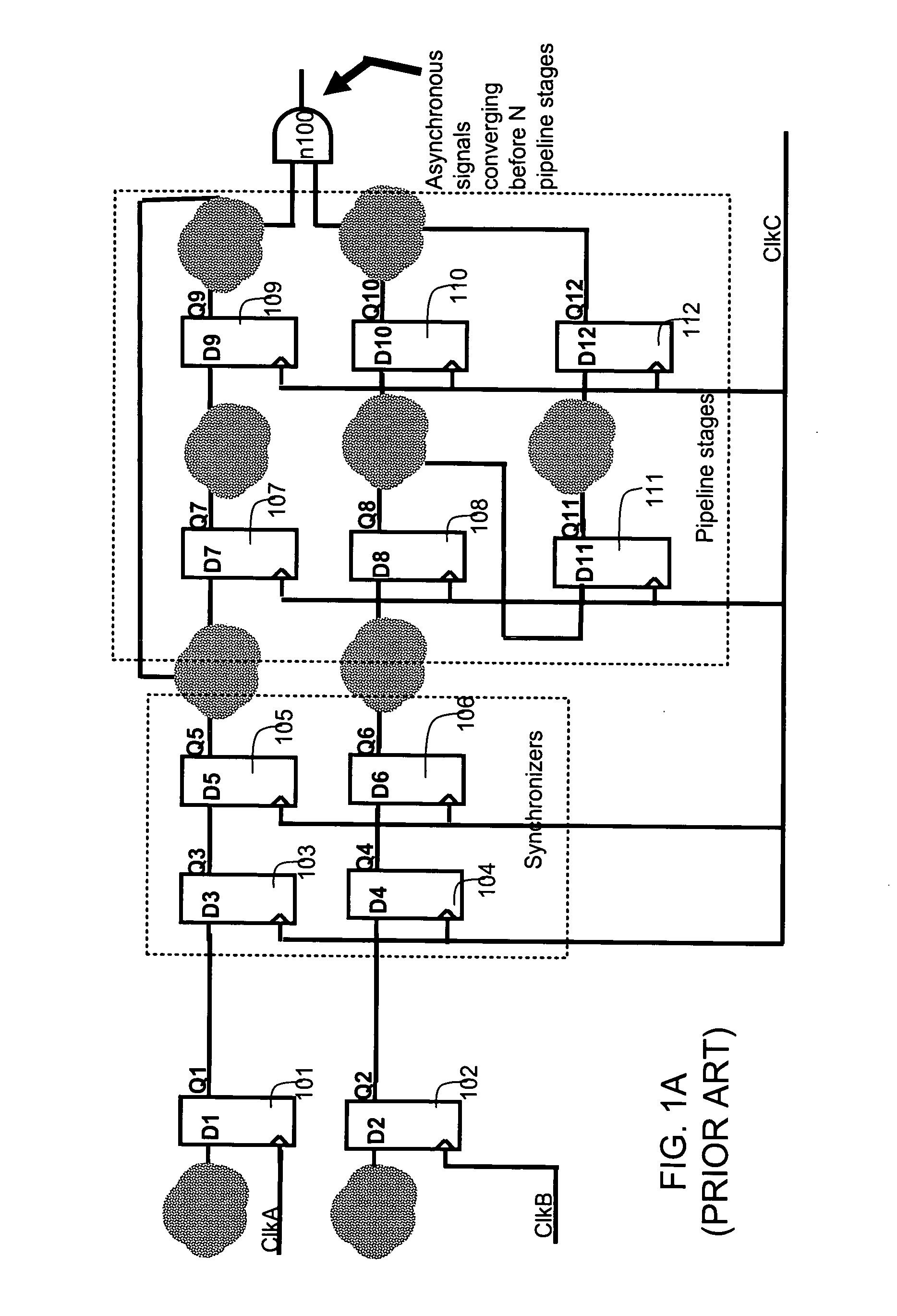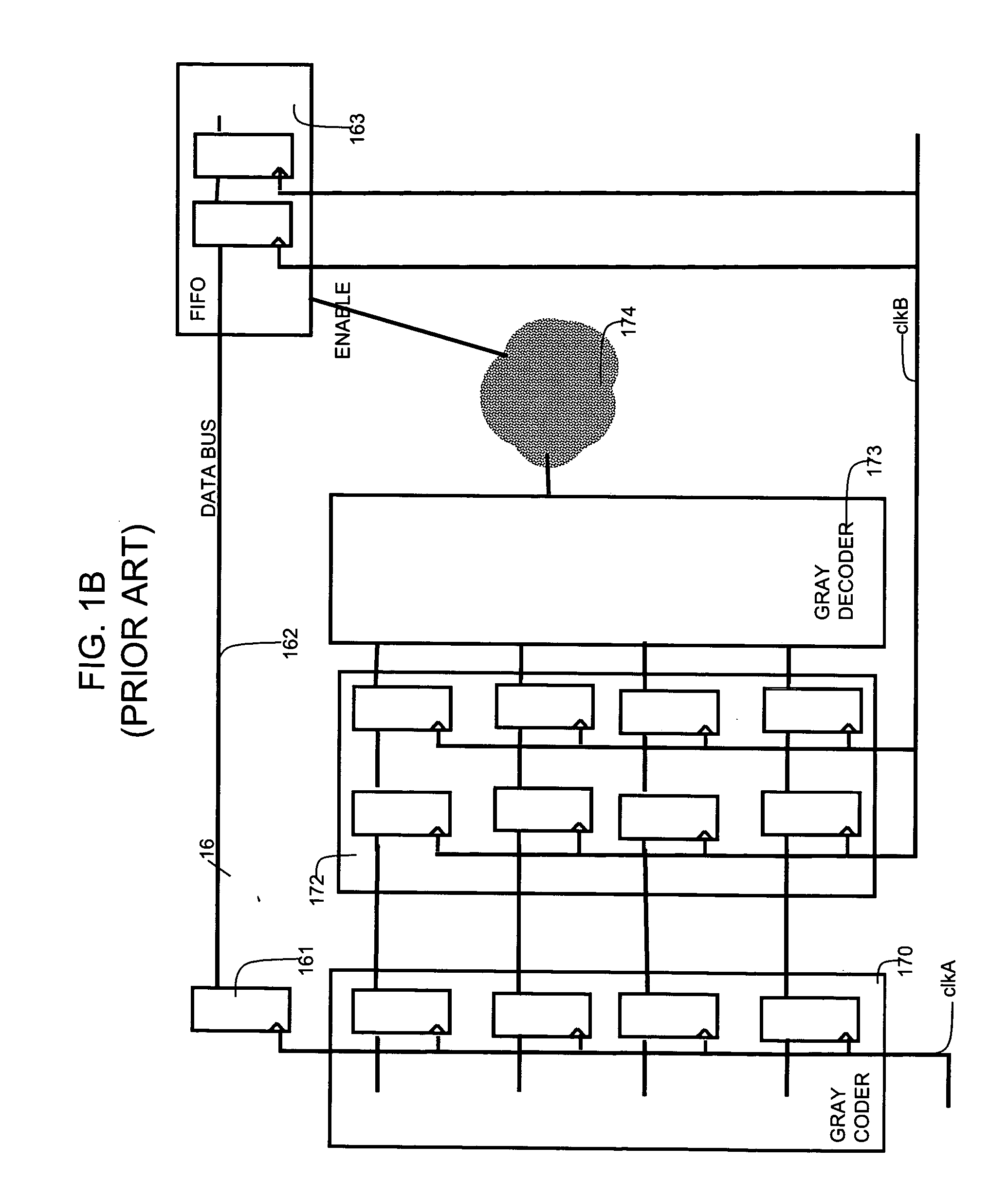Tuple propagator and its use in analysis of mixed clock domain designs
a propagator and clock domain technology, applied in the field of semiconductor chip design, can solve problems such as difficult to identify exactly, inability to find signal convergence points in a reasonable duration of time, and acute problems
- Summary
- Abstract
- Description
- Claims
- Application Information
AI Technical Summary
Benefits of technology
Problems solved by technology
Method used
Image
Examples
Embodiment Construction
[0032] A computer is programmed in accordance with this invention to propagate in a digital circuit representation, at least a pair (which is a 2-tuple) of items namely: (a) name of a wire that carries a signal that crosses clock domains and (b) sequential depth of a circuit element from the boundary of the clock domain. Note that the programmed computer may propagate a pair of (signal / wire name and sequential depth) as a portion of an n-tuple (wherein n is any natural number greater than 1) that may or may not contain other information depending on the embodiment, such as the frequency at which the signal name being propagated was originally clocked prior to entering the current clock domain. Note that it is the name of the signal that is being propagated in accordance with the invention, and not the signal itself (e.g. a logic level of 0 or 1 is not propagated, but the name itself (such as “Q1”) is propagated).
[0033] Note that a representation of a circuit design (expressed in a ...
PUM
 Login to View More
Login to View More Abstract
Description
Claims
Application Information
 Login to View More
Login to View More - R&D
- Intellectual Property
- Life Sciences
- Materials
- Tech Scout
- Unparalleled Data Quality
- Higher Quality Content
- 60% Fewer Hallucinations
Browse by: Latest US Patents, China's latest patents, Technical Efficacy Thesaurus, Application Domain, Technology Topic, Popular Technical Reports.
© 2025 PatSnap. All rights reserved.Legal|Privacy policy|Modern Slavery Act Transparency Statement|Sitemap|About US| Contact US: help@patsnap.com



